Caucasian rhododendron: description, planting and care rules
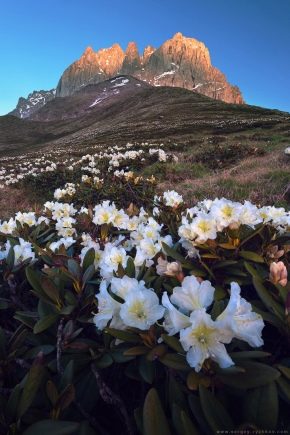
Many gardeners dream of decorating the site with beautiful exotic plants. These include rhododendron, an evergreen shrub with lush flowers that resemble roses. One of the varieties that grows mainly in the southern regions is the Caucasian rhododendron - this is a rather capricious, but at the same time surprisingly beautiful plant.
Description
The mountain shrub, which has the second name alpine rose, grows in the Caucasus (Ossetia, Dagestan and Ingushetia). The plant is exotic and quite whimsical. The features of the Caucasian rhododendron include the following:
- evergreen low shrub (up to 60 cm, in exceptional cases its height reaches 1 m) with thick dense leaves;
- creeping shoots with dark brown bark;
- flowers resemble large bells;
- inflorescences (10-12 pieces) are white, in some cases there are yellowish or pale pink shades of buds; the inner side is covered with greenish dots;
- the Caucasian rhododendron blooms 2 times a year: in summer (June) and in autumn (October);
- fruits are box-shaped (ripen at the end of August);
- in most cases, it grows in continuous thickets and quickly spreads with its own seeds.
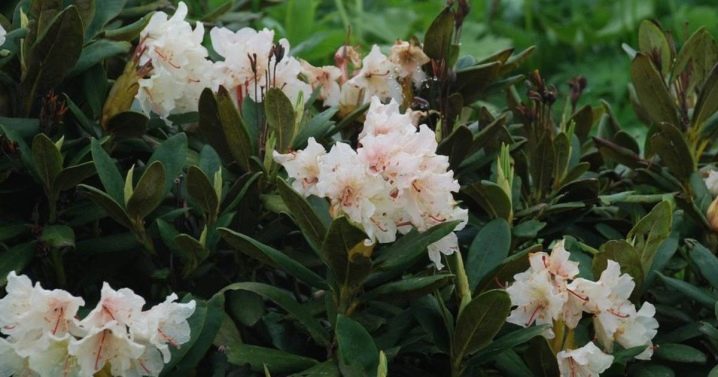
Delicate white flowers are the hallmark of this variety. Most often, mountain rhododendron is used to design alpine slides. But the capricious "Caucasian" does not take root everywhere. In this regard, it is very important to study all the features of planting rhododendron and get acquainted with the recommendations for caring for a young plant. According to the reviews of experienced gardeners, mountain rhododendron grows successfully in the Moscow and Leningrad regions, as well as in regions above the middle zone of the Russian Federation.
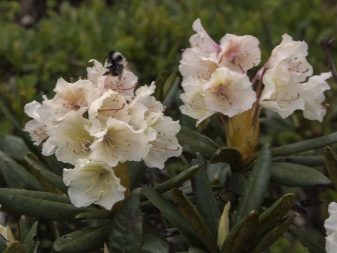
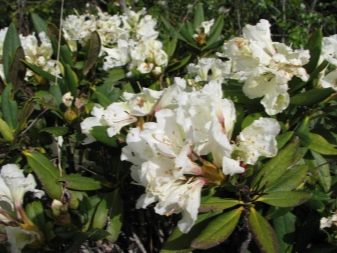
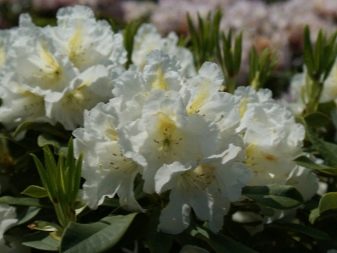
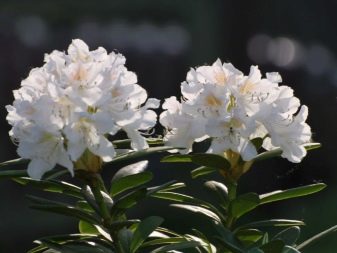
Landing rules
First of all, it is worth deciding on the "habitat" of the Caucasian rhododendron. Under the scorching sun, the shrub will feel uncomfortable, but in the "dense" shade it will not please with lush flowering. That's why a flowerbed with mountain rhododendron is best placed on the north side of the buildings... Thus, the shrub will hide from the bright midday rays and will not be subject to drafts. Also, do not plant the plant near large, massive trees. They will take all the nutrients from the soil from him.
The soil plays a very important role. Rhododendron should not be planted in areas where the groundwater level is quite high. Avoid excessive moisture, otherwise the alpine rose will die over time. Gardeners advise planting this plant in the spring (from April to mid-May). Note that the varieties planted earlier are covered with dense "vegetation" by the May holidays.


The planting hole is dug in advance. Its depth is no more than half a meter. The soil consists of the top layer of soil from under the conifers, sour peat and loam. It is not recommended to add manure humus and bottom peat to the pit. A seedling of Caucasian rhododendron is placed in a pit in such a way that its horse's neck is on the soil surface. After planting, the shrub is abundantly watered, mulched (with peat, moss or oak bark) and a young tree is fixed with a peg.In most cases, drainage is laid on the bottom of the pit to regulate soil moisture - the root system of mountain rhododendron is very sensitive.
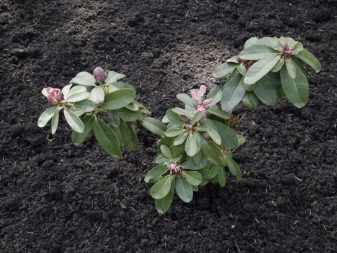
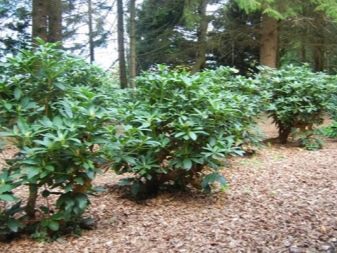
Care features
The first time after planting (2 weeks), it is important to focus on watering, as the plant may not have enough moisture. In dry summer, it is enough to water the rhododendron once a week, in the spring and autumn periods - less often.
It is better not to use tap water. River or rainwater is great. In addition, the shrub needs to be sprayed regularly.

In the first year of its "life", a young tree does not need additional feeding. Fertilizers, on the other hand, can harm it. Care consists of mulching and removing weeds. It is necessary to wipe the soil very carefully so as not to touch the roots of the rhododendron. With the onset of cold weather, the plant is covered with branches and dry leaves. Such a "hut" will help the rhododendron "survive" the winter. In addition, with the onset of low temperatures, the bush is watered abundantly so that the roots are properly moistened. It is necessary to cover the plant with a special lutrasil material when the temperature drops below 10 degrees below zero. The bush is opened when the spring sun warms the soil.
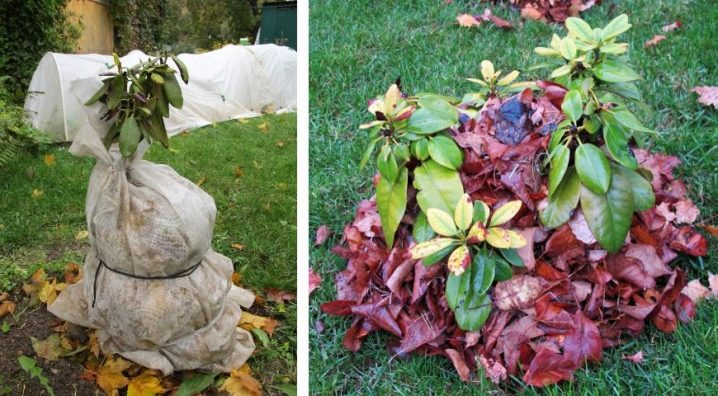
As for caring for an adult plant, first of all it is necessary to adhere to regular watering and feeding. Fertilize the soil 3 times: at the beginning of flowering and after, and then before the onset of autumn. An ideal top dressing for mountain rhododendron will be a mixture that includes superphosphate and ammonium and potassium sulfate. Fertilizers are best used dry, scattering them on the surface of the soil during irrigation. In hot summer, the plant can be fed with an infusion of chicken droppings, after dissolving it in water.
To form a compact crown, excess shoots are cut off at the end of the summer period. Timely pruning will have a beneficial effect on the growth of the shrub and promote lush flowering next year. To enhance branching, pinching of young stems is carried out. The bush is transplanted in early spring (late March or early April).
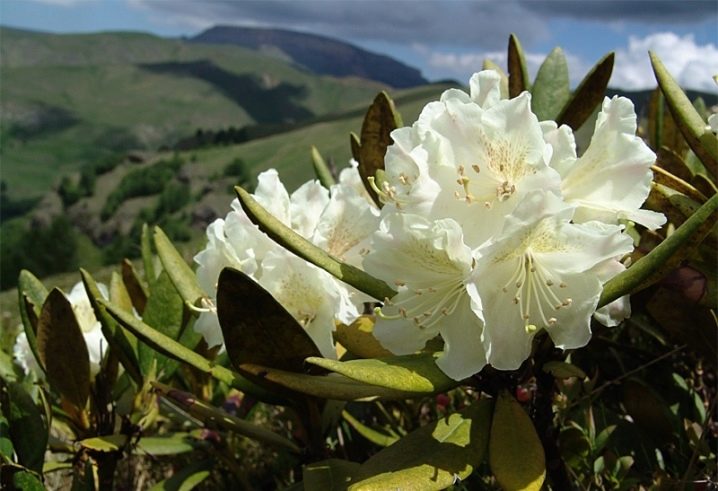
Diseases and pests
Like other branchy plants with dense foliage and many inflorescences, the Caucasian rhododendron attracts the attention of various insects. Especially the alpine rose is susceptible to the attack of a specific rhododendron bug. Its "invasion" can be seen in the numerous light specks on the leaves. In this regard, the shrub is treated with an insecticide. This remedy is excellent for ticks and worms (mealy).
Dense branches and trunks are a favorite spot for garden snails and slugs. They need to be destroyed. If a plant is planted in unsuitable soil, then its root system will very quickly become unusable: it will start to get wet, and it will get sick with a fungus. In this case, the alpine rose is treated with a fungicide solution and transplanted into light, breathable soil. In the presence of comfortable conditions and proper care, Caucasian rhododendron can grow and bloom in one place for more than 30 years.
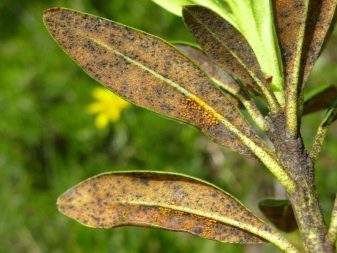
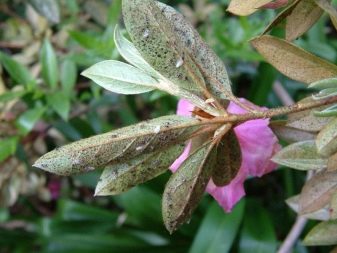
How does it multiply?
There are three ways: by seed, layering and cuttings. Sowing seedlings are sown in spring in containers with loose acidic soil. Seedlings wait quite a long time - up to 3 years. The easiest and fastest way to reproduce is by layering. A healthy shoot of the plant is pressed to the surface of the soil with a hairpin and covered with a substrate. After 1 year, it can be transplanted to another location.
As for grafting, this method is used in June. Cuttings are cut from the bush (no more than 15 cm), rooted in light sandy soil and covered with a glass jar (the temperature in the room should not be lower than 25 degrees Celsius). After a month and a half, roots will appear on them. In spring they can be planted in open ground.
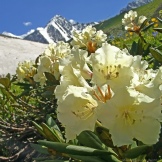
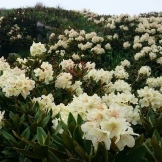
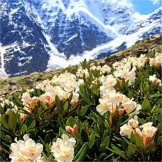
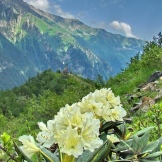
How the Caucasian rhodendron blooms in nature, see the next video.





































































































The comment was sent successfully.